
Wahpeton is a city in Richland County, in southeast North Dakota along the Bois de Sioux River at its confluence with the Otter Tail River, which forms the Red River of the North. Wahpeton is the county seat of Richland County. The population was 8,007 at the 2020 census.

Fargo–Moorhead, also known as the FM area, is a common name given to the metropolitan area comprising Fargo, North Dakota; Moorhead, Minnesota; and the surrounding communities. These two cities lie on the North Dakota–Minnesota border, on opposite banks of the Red River of the North. The region is the cultural, retail, health care, educational, and industrial center of southeastern North Dakota and northwestern Minnesota.

The Minneapolis, Northfield and Southern Railway was an 87-mile (140 km) long American shortline railroad connecting Minneapolis and Northfield, Minnesota. It was incorporated in 1918 to take over the trackage of the former Minneapolis, St. Paul, Rochester and Dubuque Electric Traction Company, also known as the Dan Patch Lines. On June 2, 1982, it was acquired by the Soo Line Railroad, which operated it as a separate railroad until merging it on January 1, 1986 along with the Chicago, Milwaukee, St. Paul and Pacific Railroad.

The Chicago, St. Paul, Minneapolis and Omaha Railway or Omaha Road was a railroad in the U.S. states of Nebraska, Iowa, Minnesota, Wisconsin and South Dakota. It was incorporated in 1880 as a consolidation of the Chicago, St. Paul and Minneapolis Railway and the North Wisconsin Railway. The Chicago and North Western Railway (C&NW) gained control in 1882. The C&NW leased the Omaha Road in 1957 and merged the company into itself in 1972. Portions of the C. St. P. M. and O. are part of the Union Pacific Railroad network. This includes main lines from Wyeville, Wisconsin, to St. Paul, Minnesota, and St. Paul to Sioux City, Iowa.
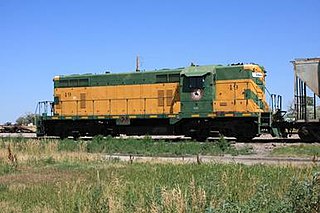
The Nebkota Railway was a Class III railroad that began operations in 1994 with 73.5 miles (118.3 km) of former Chicago and North Western Railway Cowboy Line track between Merriman and Chadron, Nebraska. Prior to the abandonments, the railroad hauled primarily grain along with some gravel and timber.
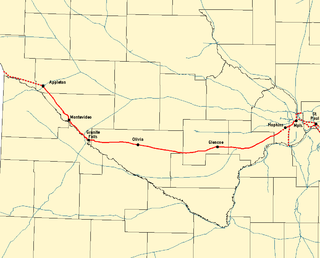
The Twin Cities and Western Railroad is a railroad operating in the U.S. state of Minnesota which started operations on July 27, 1991. Trackage includes the former Soo Line Railroad "Ortonville Line", originally built as the first part of the Pacific extension of the Milwaukee Road. This main line extends from Hopkins, Minnesota to Appleton, Minnesota. The line was originally built between Hopkins and Cologne, Minnesota in 1876 by Hastings and Dakota Railroad. In 1913, the Milwaukee Road rerouted it, reducing the curves. The line was eventually extended to the Pacific.
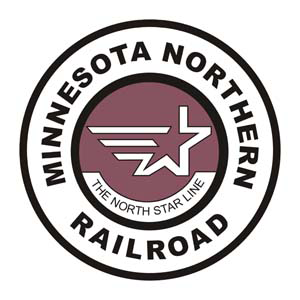
The Minnesota Northern Railroad is a Class III shortline railroad that operates over 224 miles (360 km) of track in northwestern Minnesota. The railroad is co-owned by KBN Incorporated and Independent Locomotive Service and is headquartered in Crookston, Minnesota.

Sakatah Singing Hills State Trail is a 41-mile-long (66 km) paved multi-use rail trail connecting Faribault and Mankato, Minnesota. It is maintained by the Minnesota Department of Natural Resources, which converted it from a railroad line. The name derives from the Dakota people who lived in the region; "Sakatah" translates into "singing hills". It began as a snowmobile trail and is now shared by hikers, joggers and cross-country skiers. There are sections of parallel dirt trail for horseback riders but they are not continuous. The landscape is mostly cultivated land with remnant stands of prairie and Big Woods. The trail passes through Sakatah Lake State Park and runs through city streets in Waterville.

The St. Croix Valley Railroad is a Class III short line railroad that operates over 36 miles of track in eastern Minnesota. The railroad is owned by KBN Incorporated jointly between Independent Locomotive Service of Bethel MN and Midwest Locomotive Services of Atwater MN, with the railroad headquartered in Rush City, Minnesota.
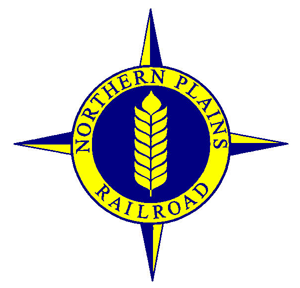
The Northern Plains Railroad is a short line railroad that operates over 344 miles (554 km) of track in the northern U.S. state of Minnesota and the northern U.S. state of North Dakota.
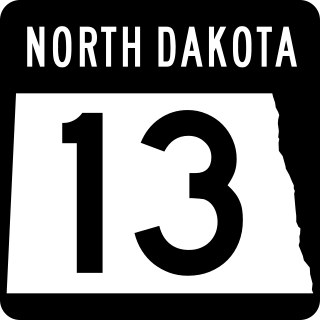
North Dakota Highway 13 is an approximately 205-mile-long (330 km) highway that serves southeast North Dakota. For the most part, the highway is a rural two-lane road, but for the final 12 miles (19 km) east of I-29 it is a four-lane divided road. Its eastern terminus is at the Minnesota state line over the Bois de Sioux River. The western terminus is located at ND 1804 about 13 miles (21 km) west of Linton and about 50 miles (80 km) south of Bismarck.
The Moorhead Subdivision or Moorhead Sub is a railroad line which runs from Moorhead to Breckenridge, Minnesota. It briefly crosses the border into North Dakota around Wahpeton, across the Red River from Breckenridge. Currently operated by BNSF Railway, this was part of the Great Northern Railway's transcontinental line from Minneapolis to Seattle, Washington.

Rapid City, Pierre and Eastern Railroad is a Class II railroad operating across South Dakota and southern Minnesota in the northern plains of the United States. Portions of the railroad also extend into Wyoming and Nebraska. It is owned and operated by Genesee & Wyoming. The primary commodities shipped are grain, clay, and cement. Operations began on June 1, 2014.

The Midland Continental Railroad is a defunct shortline railroad which operated in the U.S. state of North Dakota between 1906 and 1966. The railroad was originally envisioned as a trunk line to run from Winnipeg, Manitoba, Canada to Galveston, Texas. Financing problems led to only two segments totalling 77 miles (124 km) being completed.
The Wahpeton–Breckenridge Twins were a minor league baseball team based in Wahpeton, North Dakota and Breckenridge, Minnesota. In 1921 and 1922, the Twins played as members of the Class D level Dakota League, having been preceded by the 1897 Wahpeton-Breckenridge Methodists.













